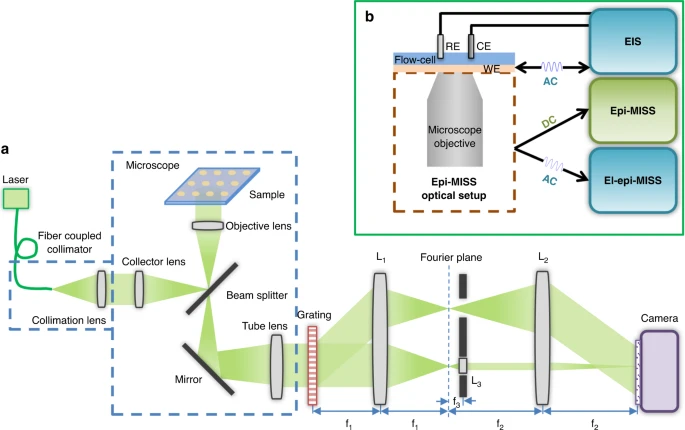High-Resolution Impedance Mapping Using Electrically Activated Quantitative Phase Imaging
C. Polonschii, M. Gheorghiu, S. David, S. Gáspár, S. Melinte,H. Majeed, M. E. Kandel, G. Popescu and E. Gheorghiu
Light Sci Appl 10, 20 2021
![]()

Retrieving electrical impedance maps at the nanoscale rapidly via nondestructive inspection with a high signal-to-noise ratio is an unmet need, likely to impact various applications from biomedicine to energy conversion. In this study, we develop a multimodal functional imaging instrument that is characterized by the dual capability of impedance mapping and phase quantitation, high spatial resolution, and low temporal noise. To achieve this, we advance a quantitative phase imaging system, referred to as epi-magnified image spatial spectrum microscopy combined with electrical actuation, to provide complementary maps of the optical path and electrical impedance. We demonstrate our system with high-resolution maps of optical path differences and electrical impedance variations that can distinguish nanosized, semi-transparent, structured coatings involving two materials with relatively similar electrical properties. We map heterogeneous interfaces corresponding to an indium tin oxide layer exposed by holes with diameters as small as ~550 nm in a titanium (dioxide) over-layer deposited on a glass support. We show that electrical modulation during the phase imaging of a macro-electrode is decisive for retrieving electrical impedance distributions with submicron spatial resolution and beyond the limitations of electrode-based technologies (surface or scanning technologies). The findings, which are substantiated by a theoretical model that fits the experimental data very well enable achieving electro-optical maps with high spatial and temporal resolutions. The virtues and limitations of the novel optoelectrochemical method that provides grounds for a wider range of electrically modulated optical methods for measuring the electric field locally are critically discussed.

